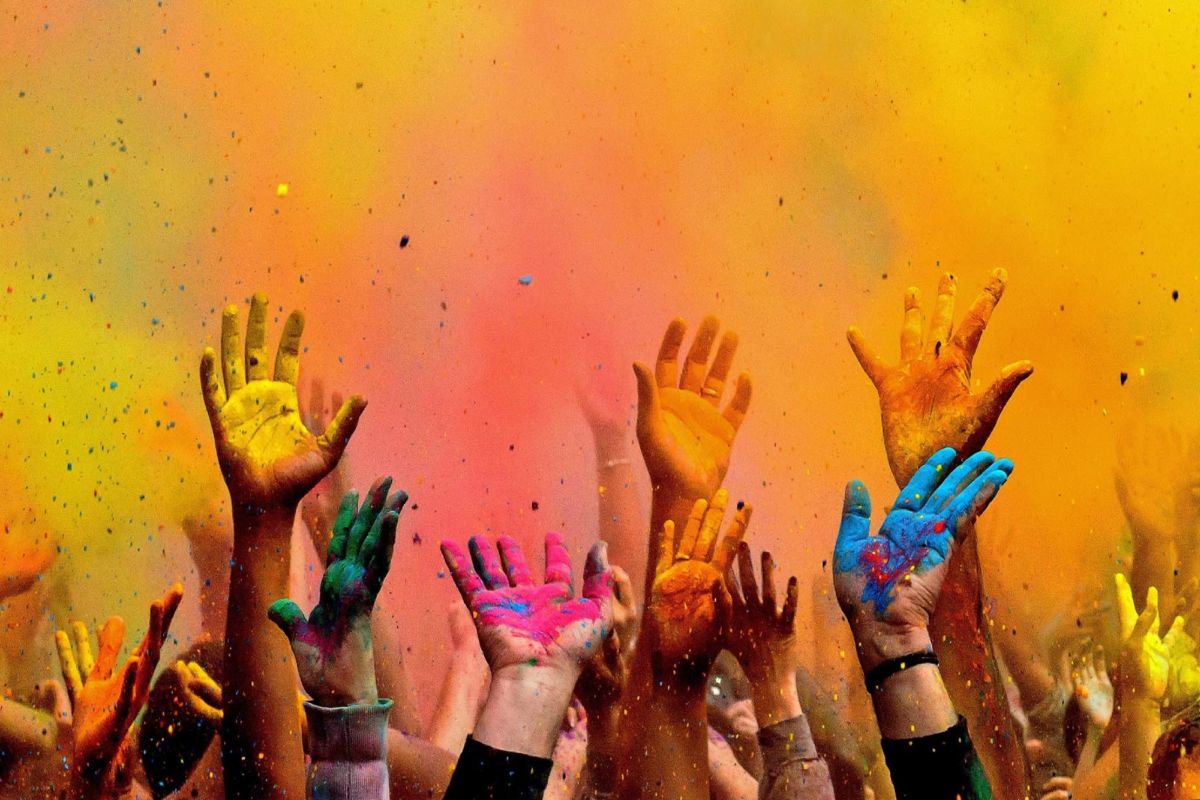Holi is a festival that celebrates colour. The rituals associated with the event are just as colourful. While most people are familiar with Holi celebrations, in which friends, neighbours, and relatives smear colour (gulal and water colours) on each other and have a good time, the spring festival provides a variety of additional festivities. Few people are aware of the springtime events that take place around the country, which are equally colourful and full of fervour and excitement.
Bangladesh’s festivals are marked by a mix of carefree exuberance and a desire to preserve national identity. People, typically dressed in yellow, fling coloured powder at one another and put on cultural performances. The ancient celebration, which is equally popular with non-Hindus, is held in Dhaka and other parts of the country, including at the thousand-year-old Dhakeswari Mandir. The participatory form of celebration is based on a long-standing tradition that predates Rabindranath Tagore. Fakir Lalon Sha’s songs and philosophy live on in the form of folk music among the people of Bangladesh, a century after his death.
Advertisement
Chelyama, Purulia district’s Dol Purnima In some regions of Purulia, especially at Chelyama in Raghunathpur, Dol, or Holi, is celebrated in a unique style. During Holi season, tourists flock to the area, which is an overnight travel from Howrah. The Dol celebration is centred on Bandhar Deul, a majestic temple that dates back to the eighth century. As the bright red Palash trees contribute to the celebratory ambiance, glasses of Mohua, the popular local brew, are drank. In the evenings, cultural programmes are held, and visitors can enjoy Chhau, Jhumur, and other folk dances, as well as Baul Fakiri music.
Basanta Utsav Initiated by Nobel Laureate Rabindranath Tagore at Vishwabharati, Shantiniketan, Basanta Utsav is a beautiful welcome to spring. Filled with colours and music, the festival sees much fervour in Shantiniketan. Tagore appropriated the concept of joy and brotherhood that he saw in the celebration of Holi and initiated Basanta Utsav on the day of Dol Purnima (full moon day of Falgun). A three-day Basanta Utsav folk festival is also organised in the Purulia district of WestBengal. Apart from playing Holi, performances include the Chau dance, Darbari Jhumur and songs by Baul musicians. Idols of Krishna and Radha are placed in a decorative palanquin and taken around the main streets. Devotees take turns to swing the palanquin while women dance and sing devotional songs.
In Manipur, the spring festival is known as Yaosang. The event, which is regarded Manipur’s most important, lasts five days and begins on the full moon of Lamba (FebruaryMarch). The Yaosang mei thaba, or burning of the straw home, takes place after sunset in every community. On the second day, groups of local musicians congregate at the Govindagee temple in ImphalEast district and perform Sankirtan. Girls demand their nakatheng on the second and third days, blocking roadways with ropes. People pour or splash water on each other on the fourth and fifth days. This festival attracts people of all ages and features Thabal Chongba (dancing in the moonlight).
Hola Mahalla also called Hola, this is a day-long Sikh festival, which is held on the second day of the lunar month of Chet, a day after Holi. Hola Mahalla is a big festive event for Sikhs around the world and also marks the beginning of the Sikh New Year. A fair, held during Holi and Hola at Anandpur Sahib, is traditionally a three-day event but participants attend Anandpur Sahib for a week, camping out and enjoying various displays of fighting prowess and bravery, as well as listening to kirtan, music and poetry. For meals, which is an integral part of the Sikh Gurdwara, visitors sit together in Pangats (queues) and eat vegetarian food of the Langar. The event concludes on the day of Hola Mahalla with a long, military-style procession near Takht Sri Keshgarh Sahib, one of the five seats of temporal authority of the Sikhs. The festival was founded by Guru Gobind Singh, the 10th Sikh guru.
In Himachal Pradesh, Holi is celebrated as a four-day traditional celebration in Sujanpur. It is supposed to have originated with the former Katoch emperor Sansar Chand, who is said to have forsaken his throne to join the masses in this colourful festival. During the fair, visitors can learn about the state’s culture, food, and art. At the same time, guests are delighted and engaged by a variety of folk songs and acts. Apart from this fair, the people of Himachal Pradesh congregate at the Ponta Sahib holy temple in Sirmour district. Locals hold the temple in great regard, and Holi is regarded the most auspicious day for seeking blessings.











